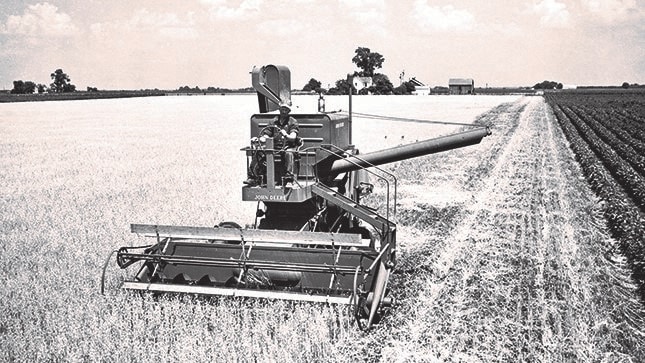PRESS RELEASE June 20, 2022
John Deere celebrates 75 years self-propelled combine harvesters
The development of the self-propelled combine has fundamentally changed agriculture. Today, John Deere combines harvest more than half of the world's grain. The success story of combines, from the Model 55 to the X-Series, is one of technical innovation.
In 1947, John Deere launched the Model 55, the first self-propelled combine harvester, which is considered the forerunner for today's combines. This was the company's response to the advancing mechanisation of agriculture. In the following years, John Deere concentrated primarily on self-levelling machines, such as the 55H hillside combinations, which were able to achieve the best threshing results even in demanding terrain. Over time, combines evolved to help farmers harvest faster and more efficiently.
With the turn of the century, steering systems came more and more into focus, which John Deere dealt with from the beginning. As early as 1999, the company enabled parallel guidance of the machine with the Greenstar 1 display. Only three years later, AutoTracTM and the first generation StarFireTM receiver were introduced as the first system to offer combine operators hands-free guidance. Together with the introduction of the Modular Telematics Gateway (MTG) modem, also in 2002, John Deere paved the way to more precise harvesting for farmers and contractors.
This rapid development has led to today's T, S and X Series models enabling farmers and contractors to use real-time data on machine performance and positioning for remote monitoring and harvest analysis.
For more information on the history of John Deere combines, visit the homepage.
